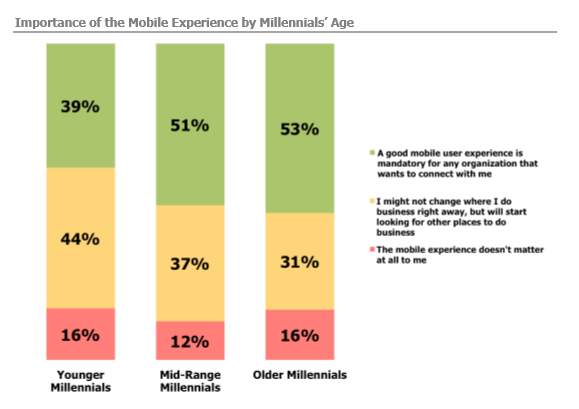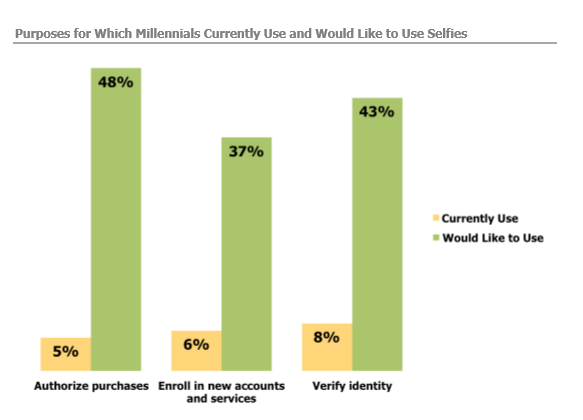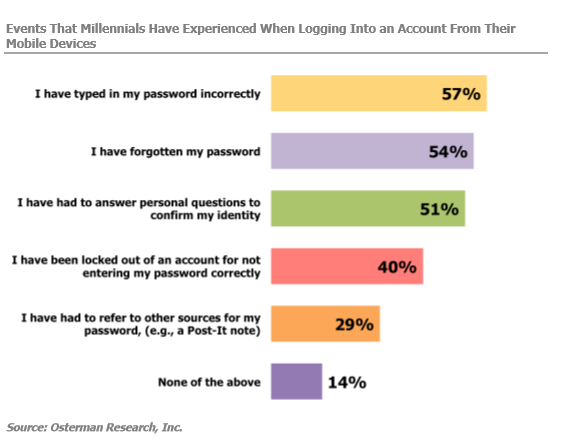Viewpoint: How Older Millennials’ Love of Selfies Is Transforming Mobile Payments
Anyone working with a digital payment channel knows the importance of the millennial market segment (ages 18 to 34). They are the largest generation in the U.S. and the consumer segment with the highest rate of smartphone ownership. Their devotion to all things mobile is well documented, but there are a few common assumptions about this group that new research has revealed to be false. While you might think younger millennials (ages 18 to 22) are more likely to make a purchase from their mobile devices, more likely to snap a selfie and more likely to want to use selfies for ID verification, in fact a new survey of more than 3,000 millennials conducted by Osterman Research found just the opposite.
The study found that the oldest millennials (ages 29 to 34) take more selfies, value their mobile device camera more and want more mobile capture options in commerce than their younger, mobile-obsessed counterparts. The importance of these findings can be fully appreciated when you combine it with the fact that U.S. Census data show older millennials make at least $10,000 more per year than the younger segment, giving them more discretionary income and potentially making them more valuable customers.
Osterman’s research also shows that older millennials are conducting more mobile transactions and have higher expectations when it comes to the mobile user experience, compared with their younger counterparts. This combination of more discretionary income, heavier mobile usage and higher expectations makes it critical for businesses to understand the mobile preferences that are unique to the older, wealthier segment of the millennial generation.
Specifically, the survey found that:
- While 85 percent of millennials take selfies, the number of older millennials taking 20 or more selfies per day is double that of younger millennials.
- 30 percent of older millennials report making frequent purchases and transactions (at least once a day) from their mobile devices, compared with just 16 percent of younger millennials.
- 53 percent of older millennials say a good mobile user experience is mandatory for any organization that wants to connect with them, compared with just 39 percent of younger millennials.
- Nearly half of older millennials have made a decision on where to spend money or switched companies based upon the mobile experience.
 Perhaps because of their love of taking selfies, all the millennials in the survey also indicated a strong desire for more opportunities to use their mobile cameras in commerce and other types of mobile transactions. Whether it is for new account enrollment, authorizing mobile purchases or undertaking more significant transactions through the mobile channel, millennials expressed a strong desire to simplify and speed processes through greater use of mobile capture. Specifically, the survey revealed:
Perhaps because of their love of taking selfies, all the millennials in the survey also indicated a strong desire for more opportunities to use their mobile cameras in commerce and other types of mobile transactions. Whether it is for new account enrollment, authorizing mobile purchases or undertaking more significant transactions through the mobile channel, millennials expressed a strong desire to simplify and speed processes through greater use of mobile capture. Specifically, the survey revealed:
- 48 percent of millennials want to use selfies to authorize mobile purchases, but only 5 percent report being able to do so.
- 43 percent want to use selfies to verify their identities. Currently only 8 percent are able to do so.
- 37 percent want to snap a photo of their IDs to enroll for new accounts or services, while only 6 percent are able to do so.
 Leading companies already are taking note of this trend and are acting quickly to incorporate more mobile capture opportunities in their processes. For example, Mastercard recently rolled out its “Selfie Pay” process for approving purchases. Because millennials are so comfortable using their smartphone cameras, they don’t seem to view the extra step of taking a selfie as an inconvenience. In fact, our survey found that millennials struggle with the more traditional methods of authentication and ID verification:
Leading companies already are taking note of this trend and are acting quickly to incorporate more mobile capture opportunities in their processes. For example, Mastercard recently rolled out its “Selfie Pay” process for approving purchases. Because millennials are so comfortable using their smartphone cameras, they don’t seem to view the extra step of taking a selfie as an inconvenience. In fact, our survey found that millennials struggle with the more traditional methods of authentication and ID verification:
- The majority of U.S. millennials have forgotten their passwords (54 percent) or typed them in wrong (57 percent) on their mobile devices.
- 40 percent have been locked out of their accounts as a result.
- 51 percent have needed to answer additional personal security questions.
- Almost all (96 percent) of U.S. millennials have been forced to reconfirm their identities because they forgot their passwords.
 In contrast, Mastercard’s Selfie Pay is fast and easy for millennial customers and is cutting down on false declines, which had been costing the company $118 billion per year, which is 13 times more than the cost of actual fraud. The company has had so much success with the program in the U.S. that it plans to expand it to 14 additional countries.
In contrast, Mastercard’s Selfie Pay is fast and easy for millennial customers and is cutting down on false declines, which had been costing the company $118 billion per year, which is 13 times more than the cost of actual fraud. The company has had so much success with the program in the U.S. that it plans to expand it to 14 additional countries.
It’s clear that a superior mobile experience is essential for connecting with millennial consumers and there is a tremendous opportunity for payments professionals to win more customers by leveraging millennials’ love of the mobile camera. Finally, the millennials’ love of mobile capture can also benefit payments companies that are seeking technologies to aid in compliance with the ever-increasing global regulations that focus on know your customer (KYC) and anti-money laundering (AML) principles. By enabling customers to use mobile capture for ID verification and user authentication, businesses can achieve KYC and AML regulatory compliance while delivering the fast and easy mobile user experience that millennials demand. In the next few years as more mobile payments processors embrace the selfie, it will become apparent that this oft-derided millennial habit has truly transformed the way we connect with our money.
Kalle Marsal is chief marketing officer at Mitek, where he lends his expertise in global marketing and strategic planning to advance Mitek’s worldwide business in mobile capture and identity verification software solutions. Prior to his role at Mitek, he served in numerous executive roles driving product marketing and business development at HP, where he developed a $200+ million business in just five years. He can be reached at [email protected].
In Viewpoints, payments professionals share their perspectives on the industry. Paybefore presents many points of view to offer readers new insights and information. The opinions expressed in Viewpoints are not necessarily those of Paybefore.












































